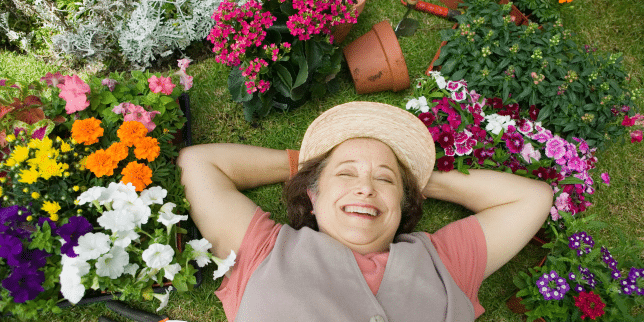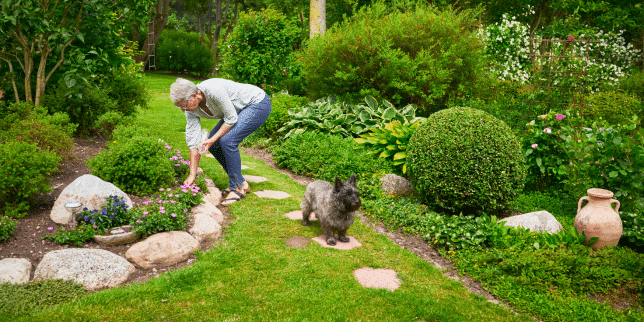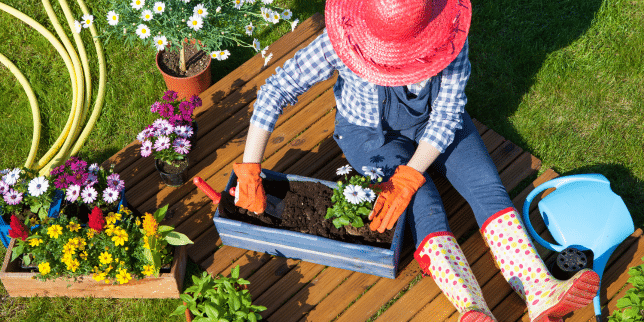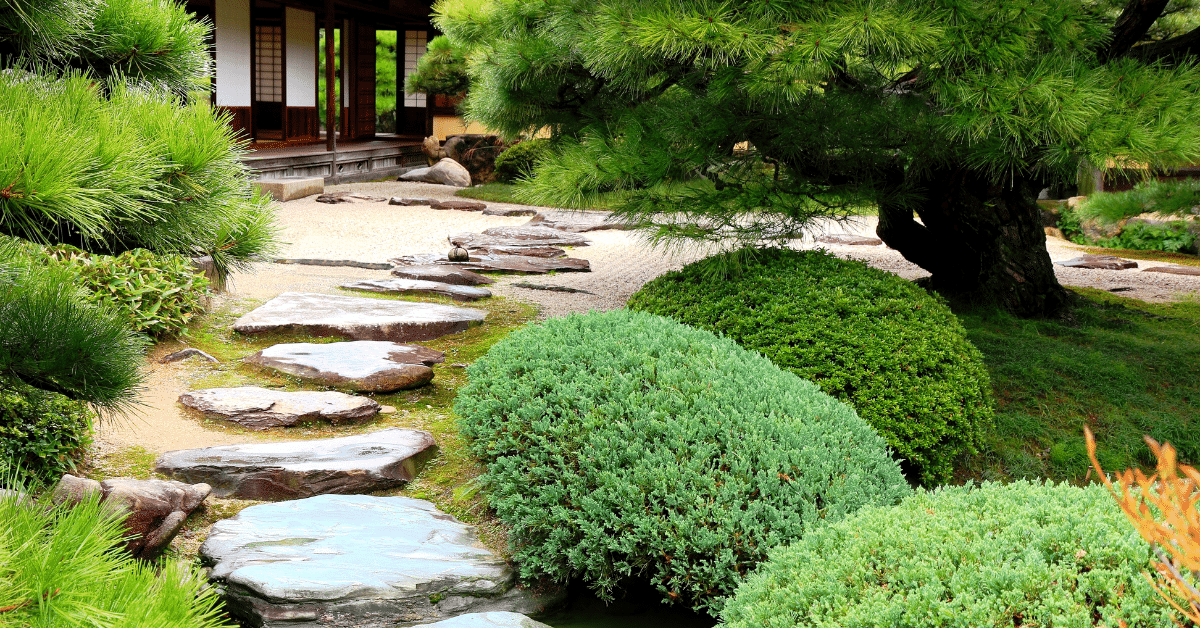In today’s fast-paced and digitally connected world, finding moments of peace and tranquility can be challenging. Modern life’s constant stimulation and demands can overwhelm and mentally exhausts you.
However, amidst the chaos, a simple yet powerful practice can help you find inner calm and restore a sense of balance – gardening. Gardening offers an opportunity to connect with nature, engage your feelings, and cultivate a serene and focused mind.
This article explores how gardening can be a powerful mindfulness tool and provides practical tips on incorporating gardening into your daily life.
The Healing Power of Gardening

Mindfulness is practicing paying attention to the present moment with non-judgmental awareness. Gardening provides a perfect setting for practicing mindfulness. It invites you to slow down, connect with nature, and engage in nurturing and growth.
Adding a decorative iron window box to your garden can elevate your mindfulness practice. Picture waking up to vibrant flowers or herbs in a beautifully crafted box outside your window. Tending to these plants becomes a mindful ritual, fostering a deeper connection with nature and bringing peace to your daily routine. Whether you have a garden or a balcony, a decorative iron window box invites you to slow down, appreciate nature’s beauty, and find calm in gardening.
As you delve into the gardening world, explore the internet, where you can discover unique products at H Potter, an online store featuring gardening tools, planters, and decor to enhance your gardening experience.
Here are some ways gardening can help cultivate a calm and focused mind:
1. Grounding in the Present Moment:
When you garden, you are fully engaged in the present moment. You focus your attention on the task, whether planting seeds, watering plants, or tending to the soil. This presence helps quiet the mind and allows you to experience a sense of flow and deep engagement with your surroundings.
2. Sensory Awareness:
Gardening profoundly stimulates your senses. Feel the texture of the soil, smell the fragrance of flowers, listen to the rustling of leaves, observe the vibrant colors of plants, and even taste the fruits of your labor. Engaging your senses in this way brings you into direct contact with the richness and beauty of the natural world, grounding you in the present moment.
3. Cultivating Patience and Acceptance:
Gardening teaches you the value of patience and acceptance. You witness the gradual growth of plants, from seeds to sprouts and, finally, to full maturity. You learn to accept the natural cycles of life, including the inevitable challenges and setbacks that come with gardening. This acceptance helps you develop resilience and a greater sense of serenity.
4. Connecting with Nature:
Gardening allows you to establish a deep connection with the natural world. As you spend time outdoors, you develop a greater appreciation for the intricate web of life surrounding you. You become attuned to the seasons, the weather, and the delicate balance of ecosystems. This connection nourishes your sense of belonging and fosters a broader perspective beyond yourself.
Tips for Gardening Mindfully

Now that you understand the benefits of gardening for mindfulness, it’s time to explore some practical tips to help you cultivate a calm and focused mind through gardening:
1. Create a Sacred Space:
Designate a specific area in your garden that will be your sanctuary for mindfulness practice. This could be a small corner, a raised bed, or a dedicated meditation garden. Make it inviting and clutter-free, with elements that inspire peace and tranquility, such as a bench, a water feature, or aromatic plants.
2. Start Small:
If you’re new to gardening, start with a manageable small project. Begin with a few potted plants or herbs on a windowsill or balcony. As you gain confidence and experience, you can gradually expand your garden space and take on more ambitious projects.
Read: Why Start Small? The 5 Important Benefits of Starting Small
3. Practice Mindful Planting:
When planting or transplanting seedlings, focus on the task. Notice the soil texture, the plant’s weight in your hand, and the gentle movements as you place it on the ground. Connect with the earth beneath your fingers and imagine the potential for growth and transformation.
4. Engage Your Senses:

Take time to engage your senses while gardening. Observe the colors, shapes, and textures of plants. Inhale the fragrance of flowers and herbs. Feel the sun’s warmth on your skin and the gentle breeze on your face. Listen to the sounds of birds chirping or leaves rustling. By immersing yourself in the sensory experience, you deepen your connection with nature and anchor yourself in the present moment.
5. Practice Mindful Maintenance:
Embrace the process of tending to your garden mindfully. Whether you’re watering, weeding, or pruning, bring awareness to each action. Notice the sensation of the water flowing from the hose, the texture of the leaves as you touch them, and the sound of the shears as you trim. Approach each task with a sense of care and appreciation.
6. Embrace Imperfection:
Remember that gardening is a journey of ups and downs. Some plants may thrive, while others may struggle. Accept the imperfections and setbacks as part of the natural process. Instead of becoming frustrated or discouraged, view them as opportunities for growth and learning. Cultivate patience and resilience as you navigate the challenges, knowing each experience contributes to your personal development.
7. Practice Gratitude:
As you spend time in your garden, cultivate a sense of gratitude for the abundance of nature. Appreciate the beauty and intricacy of plants, the soil’s life-giving properties, and the natural world’s wonders. Express gratitude for the opportunity to engage in this mindful practice and for the moments of peace and serenity it brings to your life.
8. Take Mindful Breaks:

Use your garden as a retreat for moments of rest and rejuvenation. Sit quietly among your plants, allowing yourself to simply be. Breathe deeply, noticing the scents and sounds around you. Let go of any thoughts or worries, and immerse yourself in the present moment. These mindful breaks can serve as mini-meditations, refreshing your mind and restoring focus.
Read: 13 Creative Ways How to Take Short Breaks During the Day
9. Incorporate Reflection:
After each gardening session, take a few moments to reflect on your experience. Notice any insights or observations that arose during the practice. Journaling can be a valuable tool for capturing these reflections and deepening your understanding of yourself and your relationship with nature.
Takeaway
Remember that gardening for mindfulness is a personal journey. Allow yourself to experiment, make mistakes, and discover what works best. Each moment spent in your garden is an opportunity for self-discovery, healing, and inner transformation. So, embrace the practice of gardening for mindfulness and let nature guide you on the path to a calm and focused mind.


